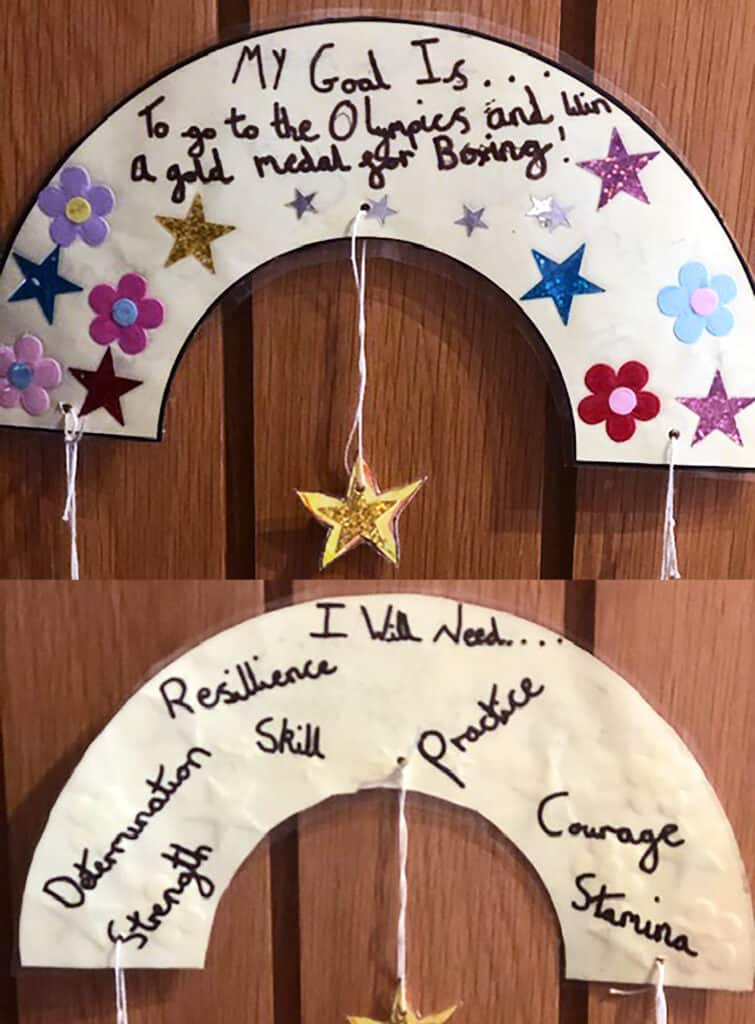More buyers are bidding over the asking price for properties than at any point in the last seven years. The UK’s property market is flying at the moment, with buyers battling to secure sought-after homes before the end of the stamp duty holiday. But is now a good time to sell locally?
New research by NAEA Propertymark found one in six properties (16%) sold for more than their asking price in March – the highest proportion recorded in seven years. In the same month, a third of properties (33%) sold for below their asking price, the lowest proportion since NAEA started keeping records. The estate agency group says there are currently 13 buyers for each home on the market, as the stamp duty holiday continues to entice buyers.
So we gathered a group of the most experienced local experts to talk specifically about what’s happening in our own market, to see what’s selling and who’s buying:
How are things looking in the property market currently? The impression to the public is that it is booming, and being an estate agent right now is an easy life: is this a misconception?
Roderick Thomas, owner of Roderick Thomas Estate Agents didn’t hesitate: “The market is booming and should, and generally does, reflect in the estate agency business.
A vigorous market involves agents working harder and faster to respond to more enquiries, carry out more viewings and negotiate and agree more sales. All very exciting, great for the economy and local employment – we’re currently recruiting to expand our staff across both branches.
Ashley Rawlings, head of residential sales at Savills Wimborne agrees “There is undoubtedly a strong country market at the moment, driven by the pandemic. More recently, the activity is being further boosted by a lack of stock. The age old factors remain the same for agents, though: it’s one thing to agree a sale, it’s quite another to see it through to exchange and completion. Just because the market is busy doesn’t mean there won’t be any unexpected hitches that could threaten to derail the process.
Knowing how to handle any difficulties and keep the sale on track is the mark of a good agent.
Simon Neville-Jones, Branch Manager at Lodestone Shaftesbury also commented on the hectic market “We have multiple buyers for many of the houses we have listed over the last year. Several of our houses followed by best bids have attracted at least 30 viewings within days of being added to the market.”
Susie Palin, head of Meyers Blandford, said “The toughest issue we have is lack of housing stock available to a high volume of buyers; currently in certain situations, vendors have to be ‘under offer’ or cash buyers in order to even view a house which has meant that there is a level of reluctance for some would-be sellers to put their houses on the market for fear of having nowhere to go.
It’s a real chicken and egg scenario at the moment balancing both vendor and buyer expectations.
Can you tell us about the current Stamp Duty Holiday benefits? How is that going to affect things over the next six months?
Brad Hansford from Meyers Shaftesbury isn’t worried “Most buyers have two budgets at the ready, pre- stamp duty holiday and post-, in case they miss the deadline. Most serious buyers have done their homework and realise that after June 30th, there is still a saving to be made on stamp duty and have done their sums accordingly.”
Roderick is confident in the market remaining high “There’s continued lower relief until the Autumn. Buyers naturally want to take advantage of reduced SDLT and are aware they may not complete a purchase prior to the end of June. Nevertheless demand is increasing and I don’t see this changing.
In fact I think the market will continue at this or a higher level at least until the end of this year.
Ashley from Savills tends to agree “Predicting anything in property as far ahead as six months is difficult, however I do see the draw to the country remaining strong for a while yet. The market will simply adapt to the stamp duty change”
Is it okay for someone to ask for a valuation appraisal, even if they’re not sure they want to sell yet?
This drew a reassuring and unequivocal YES from every estate agent!
Simon: “Yes! Agents often visit houses on a regular basis before they go to market.”
Susie: “Of course! most Estate Agents offer free valuations – it gives the seller an idea of where they stand financially”
Roderick “Absolutely.
We sell lots of properties which we originally visited months and even years previously!”
James McKillop, head of residential sales at Savills Salisbury explained further “we look to build long term relationships with clients. We recognise that circumstances change and that it’s important for people to know what their house may be worth at any given time so they can make plans. Talking to an agent about the market now may crystallise those plans or provide further food for thought.
If ‘now’s a perfect time to sell’ – what advice would you give to anyone considering taking the plunge?
Savill’s Ashley “The basic economics of supply and demand suggest now is a good time to sell. In some instances, we are handling competitive bids, and agreeing sales in excess of guide prices. Clearly I would recommend instructing an agent with a good track record – at Savills, some clients prefer to sell ‘off market’ without the use of websites or advertising”
Susie suggests being genuinely ready “It is a seller’s market currently with demand for housing high and inflated prices; if you wish to sell, be ready for your house to sell quickly. The first step of the process would be to get a local property expert out to your property so you are aware of what your main asset is worth.
Roderick “Factors driving the market include shifts to home-working, desire to move out of the bigger cities and towns, and we’ve seen a big leap in interest from overseas buyers, too. The current market is also a catalyst for people who were perhaps considering selling later in the year to crack on and do so now. My advice is to try and buy and sell in the same market.”
Simon “This remains the best market to sell in since the boom of 2006/2007. However, it will not last forever and could easily change by this time next year. It’s hard to predict, so we are encouraging people to make use of the increasing rates of value and demand for houses in Somerset and Dorset.
We see the stories of houses being snapped up super-fast – what tips do you have for potential buyers who are finding the speed of the market
The agents were unanimous in the need for registering with your local estate agents. Meyers’ Brad: “Get registered with each and every Estate Agent in the area of choice, be ready to be flexible and perhaps compromise on location. Most agents will have relationships with builders as well as private sellers and they will know which properties are ‘coming soon’. It is desperately competitive at the moment so keeping in touch with agents is a must. We have frequently sold properties in recent months that have not even managed to hit the main portal sites because the buyer is registered with us.”
Roderick takes things a step further than agents’ mailing lists and checking websites regularly: “Make sure you have a good solicitor lined up and get your paperwork in order for conveyancing. If a vendor receives multiple offers, you’ll be in a better position as a buyer if you’re organised and keen to proceed swiftly and efficiently.
Simon adds the drive for social media to your checklist “Last month we reached over 62,000 people via social media. We ensure that all our properties are added to our social media channels as soon as they are on the market, often before they are even added to Rightmove.”
And Savills’ James takes a step backwards “Most importantly, my advice would be to have funding in place, or at the very least an agreed sale in a short and stable chain. Once that is the case, register with the agents most likely to handle the sort of property you would like to buy and keep in touch with them.
Good agents will ring buyers regularly but be proactive – don’t feel you have to wait for them to call you.”
Who’s buying locally – is it an influx of people looking for a new rural location post-covid, or is it predominantly the local market shifting?
Simon shares Loders’ latest data with us “Our social media and website statistics since January have shown that prospective buyers are mostly UK, but not necessarily local. We have engagement from America, China and Germany, but the majority are UK-based. Our latest house sale attracted buyers visiting from London, Surrey, Lincolnshire, Hertfordshire, Hants, Bath, West Sussex, Berkshire and, of course, Dorset.”
Savills’ Ashley agrees it’s a widespread mix of buyers “We have seen an increase in buyers from London and the Home Counties. They have traditionally made up a large part of our market but the number of new applicants in this bracket has certainly grown. We have also seen a lot of activity from local people looking to upsize within the area.
Roderick is seeing the same movement, but adds a third sector
“It’s the perfect storm. Buyers moving out of London wanting the benefits the country and small towns and villages offer. Likewise, overseas buyers want a base in the UK. The third element is buyers who have been renting for years. Usually people can rent a house which is beyond their budget to buy. This has kept many people renting for years, but they’re seeing inflation coming and they’re now rapidly buying.
Are there currently any specifically desireable locations within the North Dorset area?
Meyers’ Susie says things are so busy it’s tough to call “We have buyers registered wanting towns, villages, splendid isolation and also right in the middle of all amenities!”
Roderick agrees “Picturesque and desirable villages, not to mention wonderful country pubs and spectacular rural scenery; it will always be a popular spot for those seeking to relocate to the West Country. We’re seeing high demand both for rural/ village homes and also homes close to good transport links for those wishing easily to commute to London and elsewhere.”
Lodestone’s Simon feels there’s commuter demands too “The most popular area is probably the A303 corridor with villages like Charlton Horethorne, Nether Compton, Buckhorn Weston. And always villages either with or near amenities.”
Interestingly, Ashley Rawlings has seen a desire for a particular spot “We are spoilt for choice really in the Blackmore Vale but in my experience recently the Okefords (Fitzpaine & Child Okeford) have seen some good sales, with the improvement of facilities in Sturminster Newton contributing towards the increased desirability of these areas.”





















